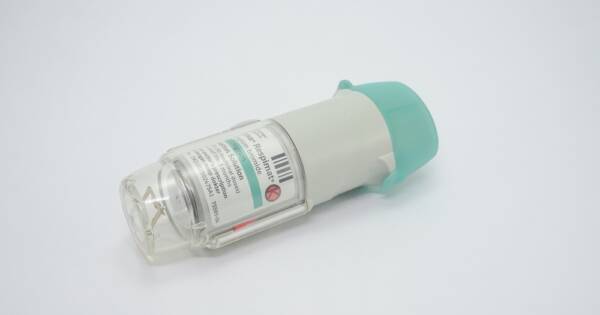Seasonal Affective Disorder (SAD) affects many people during the fall and winter months, often causing symptoms like low mood, fatigue, and loss of interest in activities. While it isn’t fully understood, experts believe that shorter days and less sunlight may play a role in disrupting sleep patterns, mood regulation, and energy levels. Fortunately, there are several strategies that may help alleviate some of the symptoms. Although everyone’s experience with SAD is different, experimenting with multiple approaches can provide some relief or at least mitigate the effects.
Understanding Seasonal Affective Disorder (SAD)
SAD is thought to be linked to reduced exposure to natural sunlight, which can disrupt the body’s internal clock (circadian rhythm) and alter levels of serotonin, a neurotransmitter associated with mood.1
The symptoms may include fatigue, low energy, changes in sleep patterns, and feelings of hopelessness or irritability. While the causes of SAD aren’t fully understood, addressing potential factors may help reduce its impact.
Prioritize Natural Light Exposure
One of the simplest and potentially most effective ways to combat SAD could be increasing exposure to natural light. This might involve spending time outside, even on cloudy days, as outdoor light is significantly brighter than indoor lighting. If you can, try to take a morning walk, as exposure to daylight early in the day may help regulate your circadian rhythm.
For those who live in areas where sunlight is scarce during winter, using light therapy lamps may be an option to consider. These devices mimic natural sunlight and could potentially help boost mood and energy levels when used regularly. However, it’s essential to consult with a healthcare professional before starting light therapy, as improper use might cause side effects, such as headaches or eye strain.
Maintain a Regular Sleep Schedule
Disruptions in sleep patterns are a common symptom of SAD. Some people may sleep too much, while others might struggle with insomnia. Maintaining a regular sleep schedule can help stabilize your circadian rhythm, which could reduce the severity of mood fluctuations.
Try to wake up and go to bed at the same time every day, even on weekends. This consistency may help train your body to recognize when it’s time to sleep and when it’s time to be awake. Additionally, creating a calming bedtime routine—such as limiting screen time, practicing relaxation techniques, or reading a book—may further improve sleep quality.
Stay Physically Active
Exercise is well-known for its mental health benefits and may be particularly helpful for people with SAD. Physical activity releases endorphins, which can enhance mood and energy levels. Engaging in activities such as walking, cycling, or even doing yoga indoors could potentially mitigate some symptoms of depression.
If possible, try exercising outdoors to combine the mood-boosting effects of both physical activity and sunlight exposure. For those who can’t go outside, home workouts or indoor classes might be just as beneficial. Even moderate exercise performed consistently could provide some relief from SAD symptoms.
Consider Dietary Adjustments
While diet alone is unlikely to cure SAD, certain nutrients may play a role in mood regulation. A well-balanced diet, rich in fruits, vegetables, lean proteins, and whole grains, may support overall well-being and provide your body with essential nutrients.
For instance, omega-3 fatty acids—commonly found in fatty fish like salmon, walnuts, and flaxseeds—have been linked to improved mood and brain function in some studies. Similarly, vitamin D, often referred to as the “sunshine vitamin,” may play a role in SAD.2 Because it can be difficult to get enough vitamin D during winter through sunlight alone, some individuals may benefit from supplements. However, before adding any supplements to your routine, it’s important to speak with a healthcare provider.
Stay Connected Socially
Isolation can worsen feelings of depression, which is why staying socially connected is crucial, even if your energy levels are low. Engaging in social activities—whether it’s a coffee date with a friend, a family video call, or participating in group hobbies—might help you feel more supported.
It may also be beneficial to talk to others who understand what you’re experiencing. Joining a support group, whether in-person or online, could provide a space to share coping strategies and encourage each other.
Try Relaxation and Mindfulness Techniques
Mindfulness and relaxation techniques may help manage stress and anxiety, which often accompany SAD. Practices like meditation, deep breathing exercises, or progressive muscle relaxation could help calm the mind and improve your mood.
Many people find success with guided meditation apps or online tutorials that offer structured mindfulness exercises. Incorporating these practices into your daily routine, even if it’s just for a few minutes, could help you manage emotional challenges associated with SAD.
Seek Professional Help if Needed
If symptoms of SAD become overwhelming or start to interfere significantly with your daily life, seeking help from a healthcare professional is a good idea. Cognitive Behavioral Therapy (CBT) has been shown to be an effective treatment for SAD in some cases. This form of therapy helps people identify and change negative thought patterns that can worsen depression.
Additionally, a doctor might recommend antidepressant medications if deemed appropriate. These medications are typically prescribed when other methods are insufficient, and they should only be used under the supervision of a healthcare provider.
Small Steps Can Make a Big Difference
While there is no guaranteed way to prevent or eliminate Seasonal Affective Disorder, taking proactive steps may help alleviate symptoms and improve your mood during the darker months. Prioritizing natural light, maintaining a consistent sleep schedule, staying active, and connecting with others are just a few ways to combat SAD.
If symptoms persist or worsen, professional guidance may be necessary to find the most appropriate treatment plan. By focusing on small, manageable changes, you may find it easier to cope with the challenges of SAD and maintain a sense of balance throughout the winter season.




